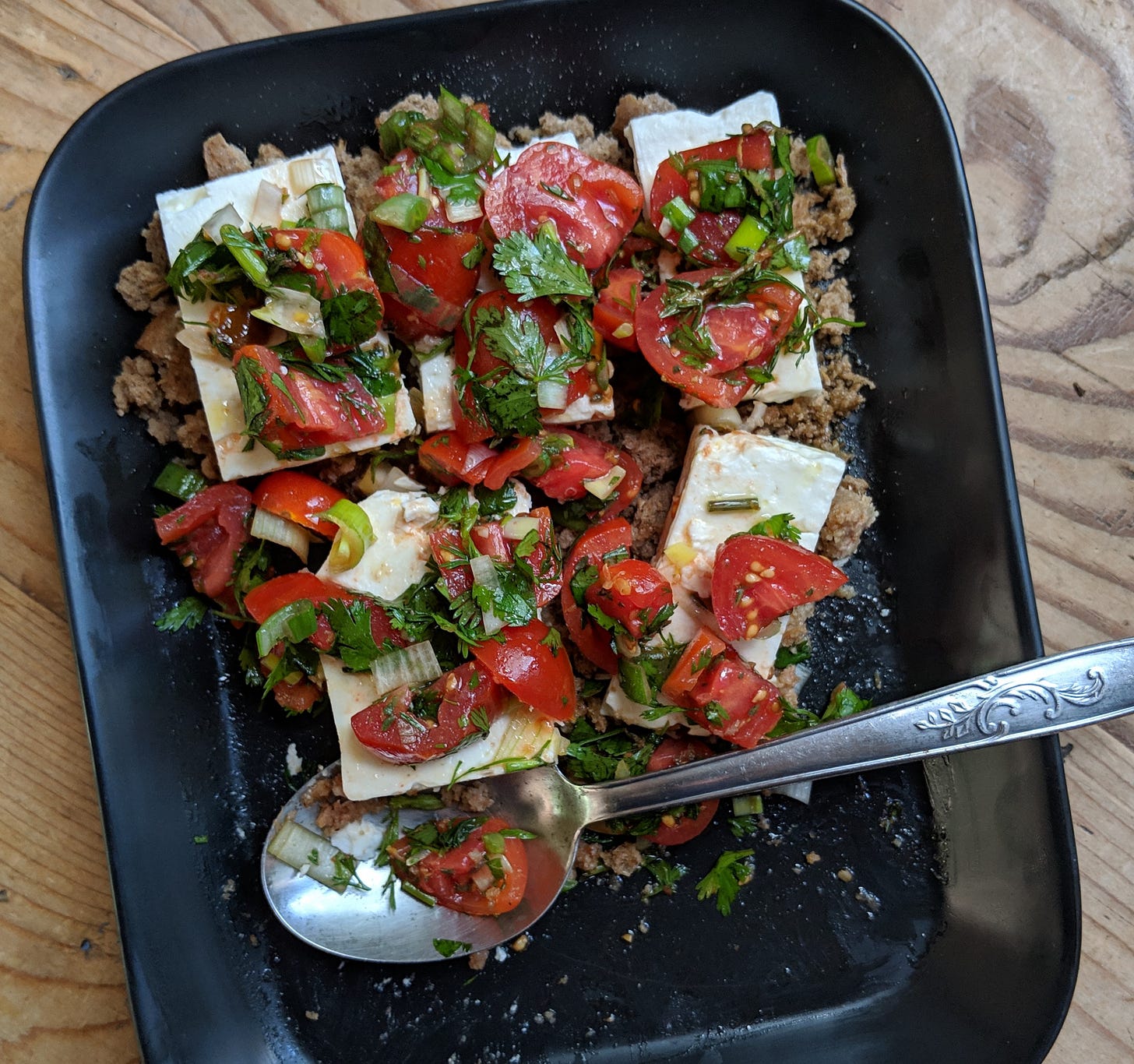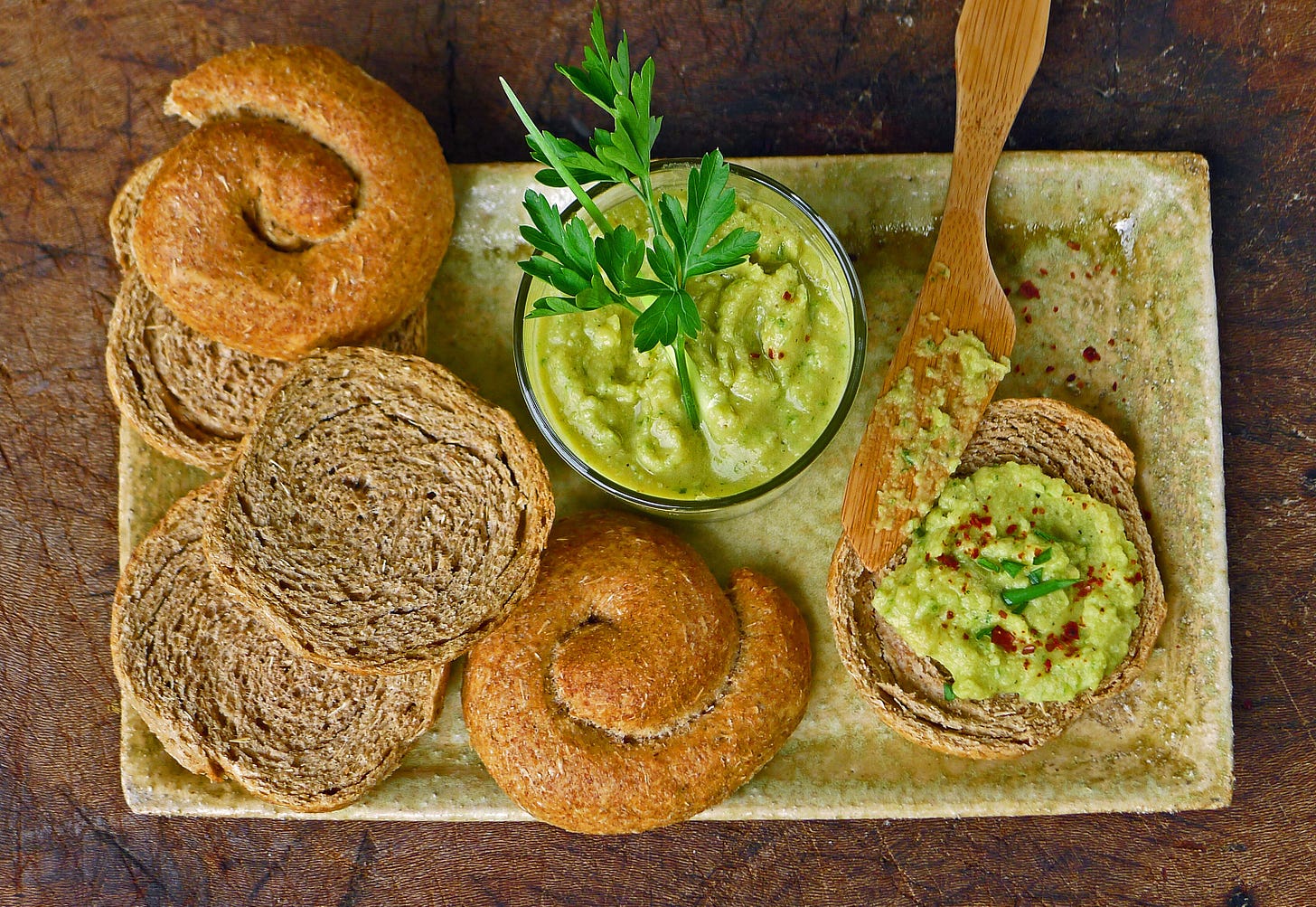Glorious Summer Lunch!
Vine-ripened tomatoes, feta, and crunchy, olive-oil-and-herb drenched paximadia (rusks), become much more than the sum of these humble parts...
Could not resist sharing the photo of the last wonderful tomatoes we harvested from the garden, a few years ago. Unfortunately now we only get a few small, yet always delicious ones.
In this Paximadia Salad with Tomatoes, Feta and Capers the crumbled hard, barley rusks are truly irresistible!
Unfortunately lighter biscuits, or toasted stale bread, would get too mushy. It is best to prepare the salad 1-3 hours in advance, but toss just before serving.
Paximadia Salad can be a full summer lunch, perfect for picnics at the beach. I make it in a large container and serve it under the beach umbrella in our attractive reusable plastic picnic bowls.
The chunky salad can be eaten with a spoon or fork, and we often enjoy it sipping the crisp fruity white or rose wine that we take to the beach in a separate cooler.
My recipe for paximadia is inspired by various traditional breads and rusks from Crete.
Scroll down the basic instructions to get my latest variation with beer instead of wine, additional spices, and two different flours (oat and rye) besides the basic barley, and wheat.
In various parts of Crete, and other Aegean islands the local twice-baked breads were once a staple, made with different flour combinations, besides barley and they had been almost forgotten for many years.
A basic staple
When, in the fifties, Ansel Keys and his colleagues studied the eating habits, the state of health, and life expectancy of various peoples in seven countries, they decided that the inhabitants of Crete were faring best of all.
Paximadia (barley rusks) in those days were the staple food of the Cretans. But when their traditional eating habits became the model for the now famed Mediterranean diet, the barley biscuits were translated into “whole wheat bread” for the unaccustomed Northern Europeans and Americans. Barley flour has now completely disappeared from the shelves of the supermarkets in big cities, and one can only find it in health food stores or at wholesale distributors of animal fodder.
But on Kea as on other islands we can get a pound or two from the local bakeries which still bake the traditional hard and dark paximadia.
Although people belonging to the generation that traditionally fed on this kind of dried bread has either died or switched to more refined foods —like fluffy supermarket, sliced bread– there is a new generation of consumers who have tasted paximadia during their summer vacations in the islands and loved them.
Young chefs have also enthusiastically adapted them and today almost all taverns serve paximadia (or dakos) salads these days…
In most Athenian neighborhood delis and in the supermarkets one can find darker or lighter paximadia, baked using mixtures containing more or less barley flour in addition to the wheat flour, which makes lighter and crunchier biscuits, which usually need no soaking.
My basic research about this ancient staple was done in 1996 for the paper I delivered at the Oxford Symposium on Food and Cooking and I would like, once again, to express my deep gratitude to Aliki Asvesta, of the Gennadius Library in Athens, for her invaluable help. The paper was published in the Symposium proceedings Food on the Move (Prospect Books) which seems to be out of print. Alan Davidson included the word ‘paximadia’ in his encyclopedia The Oxford Companion to Food with references to my paper. Thus the word has somehow become part of the English-speaking food-lovers’ vocabulary.
I revisited paximadia recently because my friend Defne Koryürek from Ayvalık, on the other side of the Aegean, organized an e-workshop as part of the two-day interdisciplinary conference on Food Futures.
She used my basic recipe for her lively presentation, and invited me to take part and speak about the history and uses of paximadia, or peksimet as they call them in Turkey.
It was a lovely experience that made me rethink paximadia as an ideal sustainable staple. It is time to revive the way our ancestors used this crunchy, twice-baked bread not just to accompany cheese and meze spreads –as I had suggested in the article I did for Eating Well magazine— but also using the twice-baked bread instead of pasta in broths and soups, and of course in our basic salads.









I THANK you for your precious good words!
Aglaia, our love for peximedia knows no bounds. This very basic staple food is so irresistible so relevant so important. It needs to be kept alive!